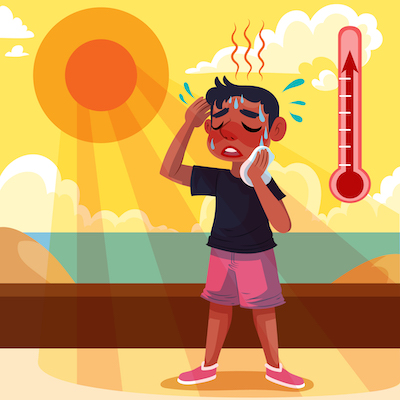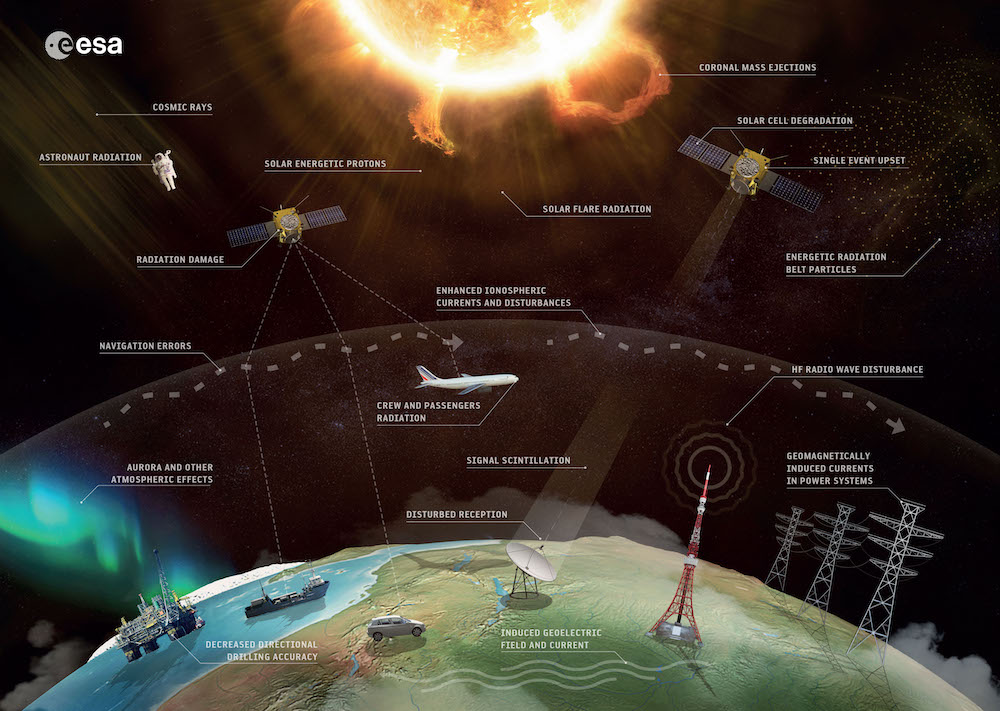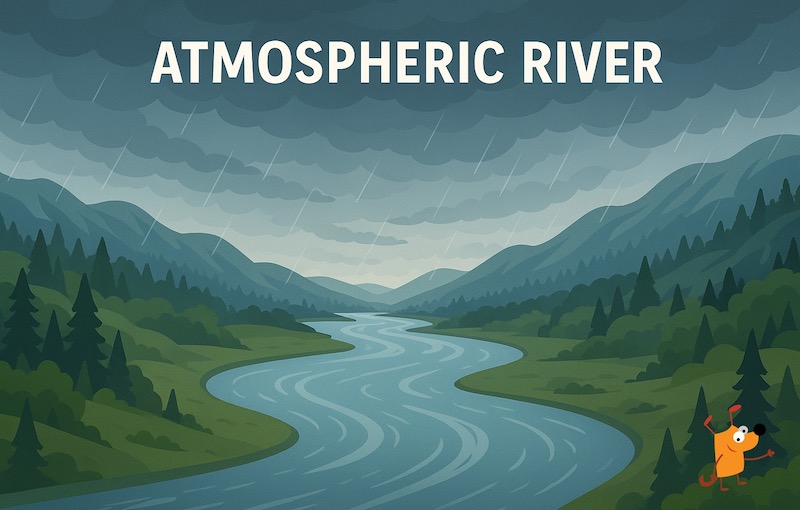Fun Facts About Jupiter
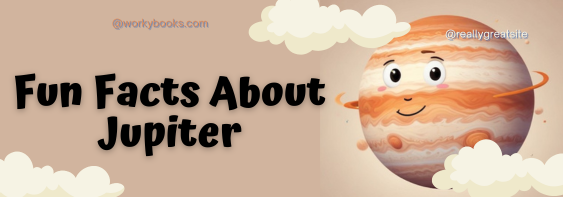
Here are som fun facts about the planet, Jupiter 🪐
- Giant Planet: Jupiter is the largest planet in our solar system. It has a diameter of about 88,846 miles (142,984 kilometers), which is more than 11 times the diameter of Earth.It’s so big that you could fit more than 1,300 Earths inside it. Wow, that’s a lot of Earths!
- Shorter Days: Jupiter rotates faster than any other planet in the solar system. It completes one rotation on its axis in just under 10 hours, which means that a day on Jupiter is less than half as long as a day on Earth. It takes less than 10 hours for Jupiter to spin around once. That means if you lived on Jupiter, your birthday would come around really quickly!!☀️
- Lots of Moon: How many moons does Jupiter have? Well, it has at least 79 known moons, and scientists keep finding more. The four largest moons, known as the Galilean moons, are Io, Europa, Ganymede, and Callisto. Ganymede is the largest moon in the solar system and is even larger than the planet Mercury.Four of these moons are so big that you can see them with just a pair of binoculars.
- Gas Giant: Even though Jupiter looks solid, it’s actually made up of gas. Imagine a planet that you can’t even stand on because it’s just a bunch of gas swirling around. Did you know, Jupiter is a gas giant, which means it is made up mostly of hydrogen and helium gas. However, scientists believe that it may have a solid core about the size of Earth deep beneath its thick atmosphere. The intense pressure and heat within Jupiter’s atmosphere cause the gas to behave more like a liquid in its lower layers.
- Swirly Clouds: Jupiter is covered with thick, colorful clouds that create stunning, striped patterns. These beautiful bands of clouds are made of swirling gases that look like an artist’s masterpiece.
- Ringed Planet:Just like Saturn, Jupiter has rings too! Although they are faint and not as bright and dazzling as Saturn’s, Jupiter’s rings are still a magnificent, magical sight made of tiny particles and dust.🪐
- Stormy Weather:The Great Red Spot on Jupiter is a massive storm that has been raging for hundreds of years. It is so large that it could easily engulf Earth. The storm is an anticyclone, meaning it rotates counterclockwise, and its winds can reach speeds of up to 400 miles per hour (640 kilometers per hour).
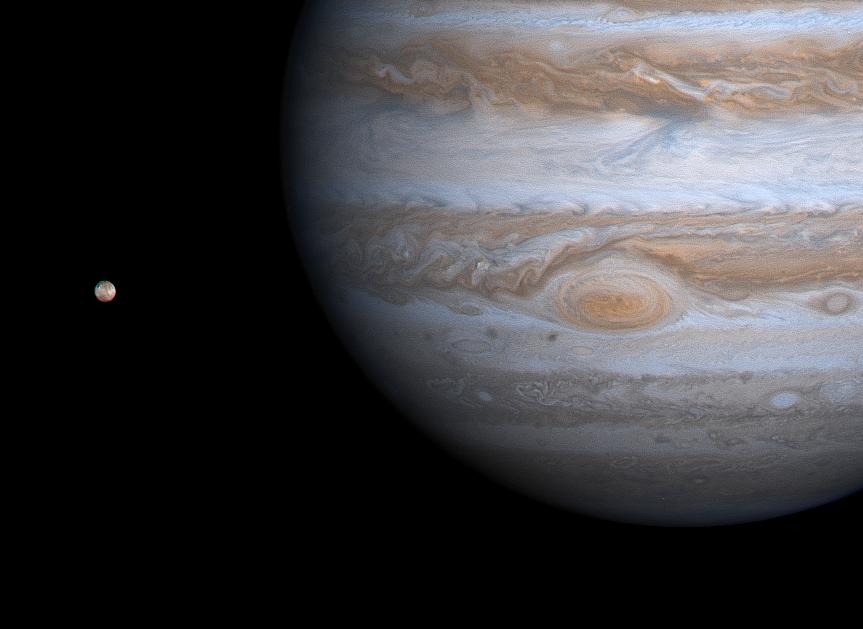
The Great Red Spot: Huge Storm on Jupiter
The Great Red Spot on Jupiter is one of the most fascinating and mysterious features in our solar system. Here’s a deeper dive into this incredible, never-ending storm:
- Enormous Size: The Great Red Spot is an enormous storm, so big that it could fit about three Earths inside it! This makes it the largest storm in our entire solar system.
- Longevity: This storm has been raging for at least 400 years! When astronomers first started looking at Jupiter through telescopes in the 17th century, they saw this giant, swirling storm, and it’s still there today. Imagine a hurricane that never stops!
- Powerful Winds: The winds inside the Great Red Spot are incredibly powerful. They can reach speeds of about 430 to 680 kilometers per hour (270 to 425 miles per hour). That’s faster than the strongest hurricanes on Earth!
- Colorful Clouds: The storm gets its name from its reddish color. Scientists believe the reddish hue comes from chemicals in Jupiter’s atmosphere, like ammonia and methane, reacting with sunlight. These colorful clouds make the storm look like a giant, swirling red eye in Jupiter’s atmosphere.
- Changing Shape: The Great Red Spot isn’t always the same. Over the years, it has changed shape and size. Recently, astronomers have noticed that it is slowly shrinking, but it is still a massive and powerful storm.
- Mystery of the Depth: No one knows exactly how deep the Great Red Spot goes. Some scientists think it might extend hundreds of miles into Jupiter’s atmosphere, making it a deep and complex storm system.
- Observing the Red Spot: The Great Red Spot on Jupiter is like a giant, swirling hurricane that’s been raging on for more than 400 years. Scientists are still trying to figure out why the Great Red Spot has lasted for so long.
The first sighting of the Great Red Spot is often credited to the curious scientist Robert Hooke. In May 1664, he described a spot on Jupiter’s surface. Over the years, many astronomers peered through their telescopes and observed this strange, reddish spot on Jupiter. Each sighting added to our understanding and curiosity about this enormous storm.
Fast forward to February 25, 1979. The Voyager 1 spacecraft was on a thrilling mission to explore the outer planets. When it was 9,200,000 kilometers (5,700,000 miles) away from Jupiter, it captured the first detailed images of the Great Red Spot. These images were breathtaking and showed the storm’s swirling, colorful clouds in amazing detail. 🛰️
Today, we continue to observe the Great Red Spot using advanced telescopes and spacecraft like Juno.
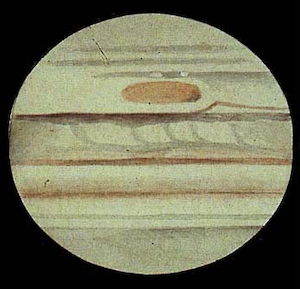
A sketch of Jupiter made by Thomas Gwyn Elger in November 1881, showing the Great Red Spot
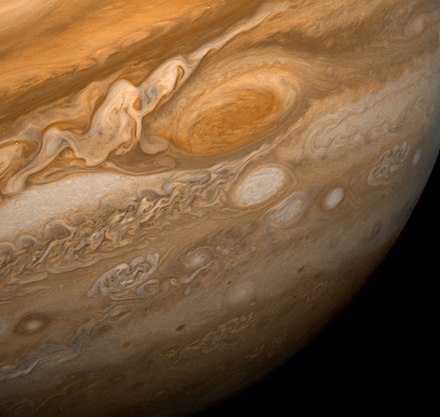
A wide view of Jupiter and the Great Red Spot as seen from Voyager 1 in 1979.
So kids, Jupiter is a pretty awesome planet with a lot of surprises. Keep exploring and learning about our amazing solar system!
Here is a 3rd grade reading comprehension worksheet on stars from our library!

